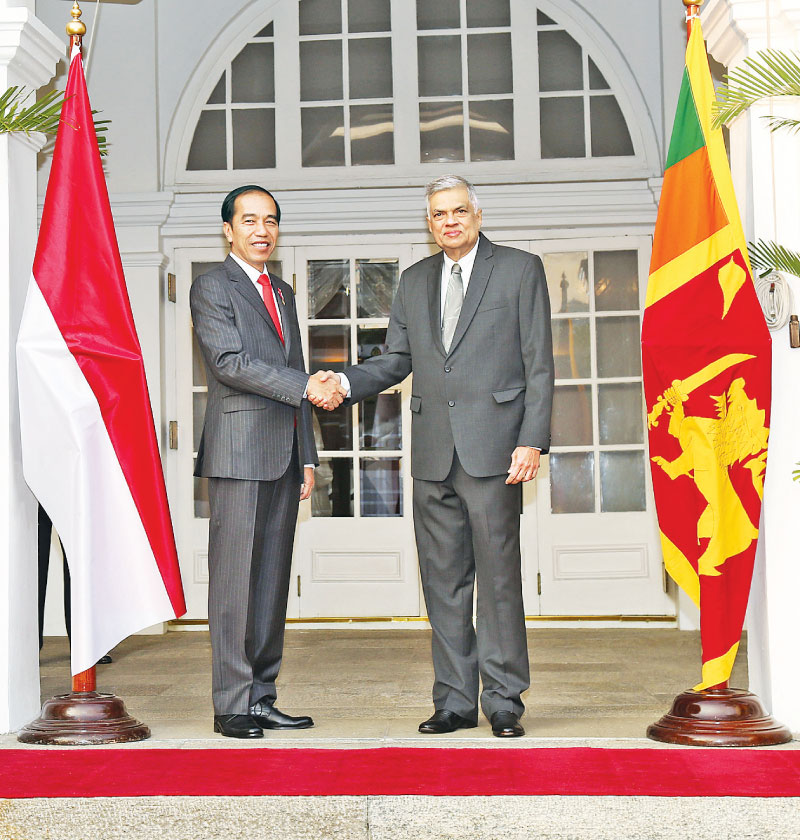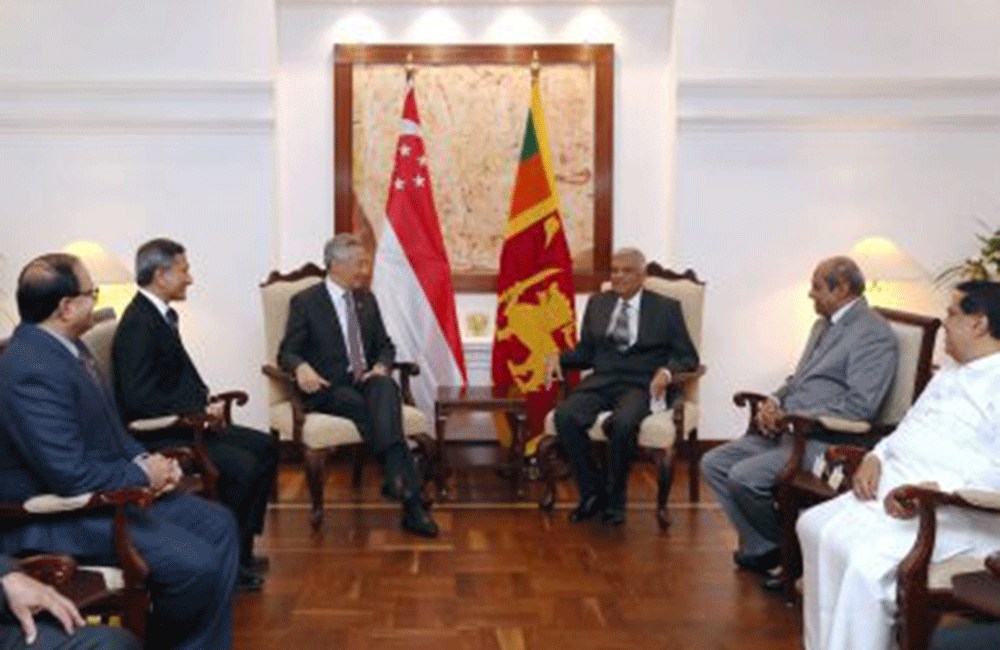By Lasanda Kurukulasuriya
February 01, 2018
Two Southeast Asian leaders, Singapore’s Prime Minister Lee Hsieng Loong and Indonesia’s President Joko Widodo, visited Sri Lanka during the week ending January 26. During Lee’s visit (from January 22 to 24) Sri Lanka signed a Free Trade Agreement (FTA) with Singapore, described as being the first ever Colombo has inked with a Southeast Asian country. The Sri Lanka’s government further showcased the agreement as being “part of a broader ‘Look East’ strategy.”

Prime Minister Ranil Wickremesinghe with Indonesian President Joko Widodo.
While the FTA has by all accounts been welcomed by Singaporean firms, in Sri Lanka it has been opposed by a large collective of local trade unions and professional associations. By the government’s own admission, Singapore is not a significant export market for Sri Lankan goods, and Singapore’s investment in Sri Lanka amounted to only $658 million from 2015 to 2017. Whether the FTA will open doors to other ASEAN markets for Sri Lanka, as the government expects, would seem to be a toss-up at this point.
The more interesting puzzle would seem to be what the government means by “Look East.”
This term is generally associated with India and its economic relations with Southeast Asia. In that context, “Look East” had its origins in the early 1990s. Since 2014, under the Modi government, India has upgraded that policy to “Act East,” a move welcomed by the United States.
“When looked at, with regard to China, the Act East policy appears to be a whole different ball game” writes Vaishnavi Mulay, in a post on the London School of Economics blog. “The Act East policy goal then appears to be two-pronged: boost India’s standing as a regional power by initiating increased cooperation in the region, and act as a counterweight to the increasing strategic influence of China.”
New Delhi’s “Act East” theme was on full display last Friday at India’s Republic Day parade, where all ten ASEAN leaders were in attendance as chief guests. The 69th anniversary event was preceded by a summit to celebrate 25 years of India-ASEAN relations.
Mulay says smaller states in China’s vicinity, like Vietnam and the Philippines, look to India to help counter Chinese hegemony. “Strategically this is a clever move as officially India does not follow a policy of containing China; cloaked by the Act East policy, India is able to assert its presence in the region while at the same time this goes hand in hand with India’s efforts to strengthen ties with ASEAN,” she writes.
However, Sri Lanka’s relationship with China is not comparable with that of India, or those of the ASEAN states. Sri Lanka has no border disputes with China, nor has it faced any aggression from Beijing, which typically supports Colombo in international forums. China has now become the biggest investor in Sri Lanka’s postwar infrastructure development.
There would seem to be no clear explanation for Sri Lanka to “Look” or “Act” East – if the term is taken to mean pursuing ties with ASEAN in order to counter Chinese influence. If Sri Lanka seeks to engage more closely with ASEAN, it would have to be for the intrinsic benefits of strengthening those bilateral relationships, and not as part of any counterbalancing strategy.
External strategic developments may perhaps help explain Sri Lanka’s “Look East” terminology. When U.S. Defense Secretary Jim Mattis revealed the Trump administration’s new national defense strategy in Washington on January 19, he marked a shift in emphasis, from terrorism to “great power rivalry,” flagging China and Russia as the main threats. He noted that China is using “predatory economics” to intimidate its neighbors, while “militarizing features in the South China Sea,” according to reports. The speech came ahead of his visit to Indonesia and Vietnam. “Mattis wants to increase maritime cooperation in the region, and Indonesia — the connection point between the Indian and Pacific oceans — is key to that” said a U.S. Department of Defense news item.
It is against this backdrop that both ASEAN leaders, in their respective joint statements, made calls for Sri Lanka to “enhance its engagements with ASEAN and the ASEAN Regional Forum.” Jokowi, during his visit from January 24 to 25, told Sri Lanka’s President Maithripala Sirisena that his country “expects Sri Lanka’s cooperation to enhance cooperation between the countries in the Indian Ocean and Pacific Ocean region,” according to the Sri Lankan President’s Media Division. Their joint statement recognized the “vibrant maritime connectivity” between the two states, the significance of bilateral defense cooperation, and the importance of “maintaining close bilateral interactions between maritime security agencies, anti-narcotics agencies, and on counterterrorism.”
“Look East” cannot be explained in relation to Sri Lanka’s economic policies alone. The answer to its meaning, if any, is blowing in the geopolitical winds that sweep the Indian and Pacific Oceans.
Lasanda Kurukulasuriya is a Colombo-based independent journalist, a correspondent for the New Internationalist and columnist for the Daily Mirror.
